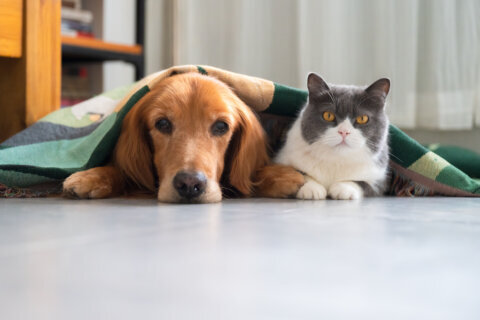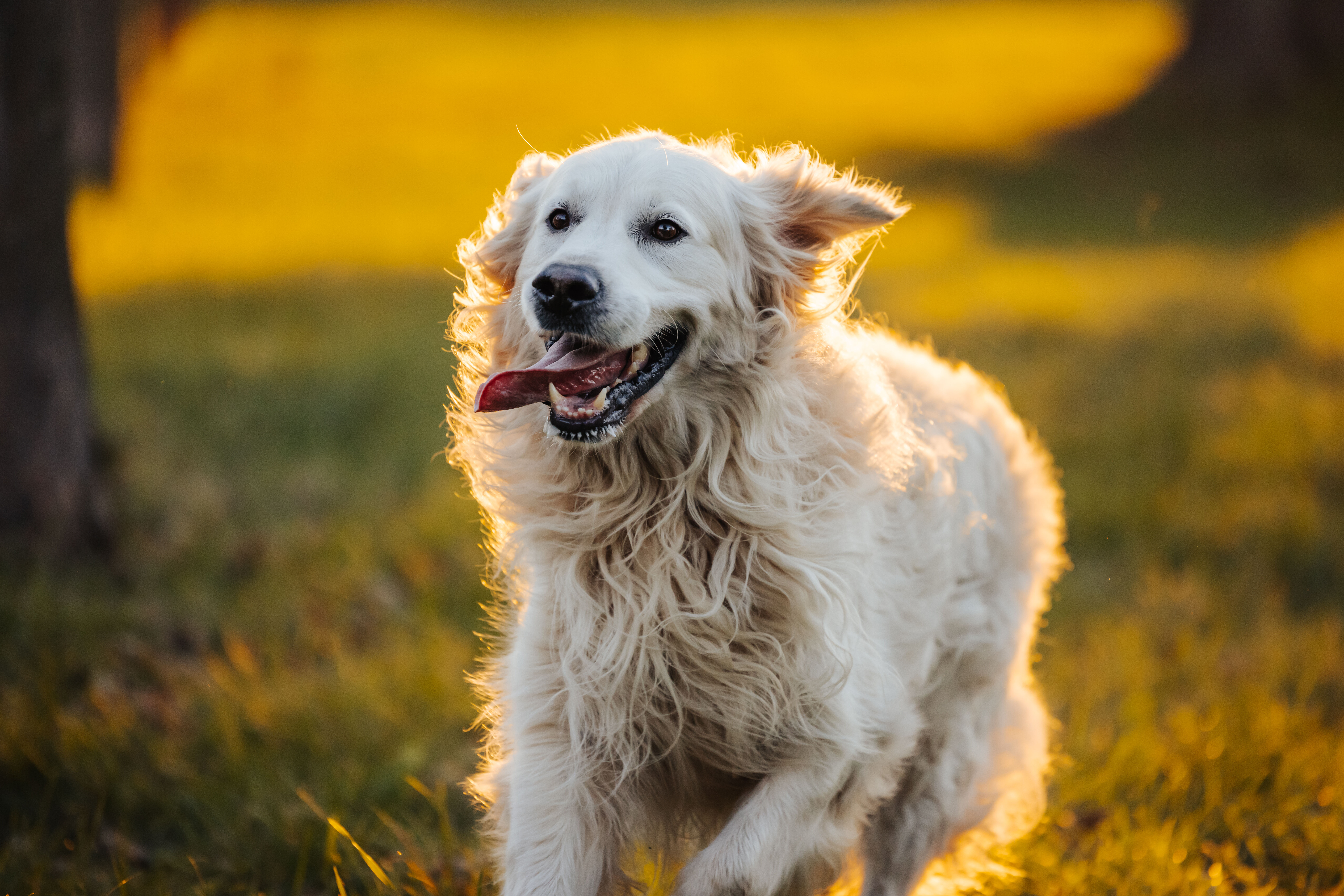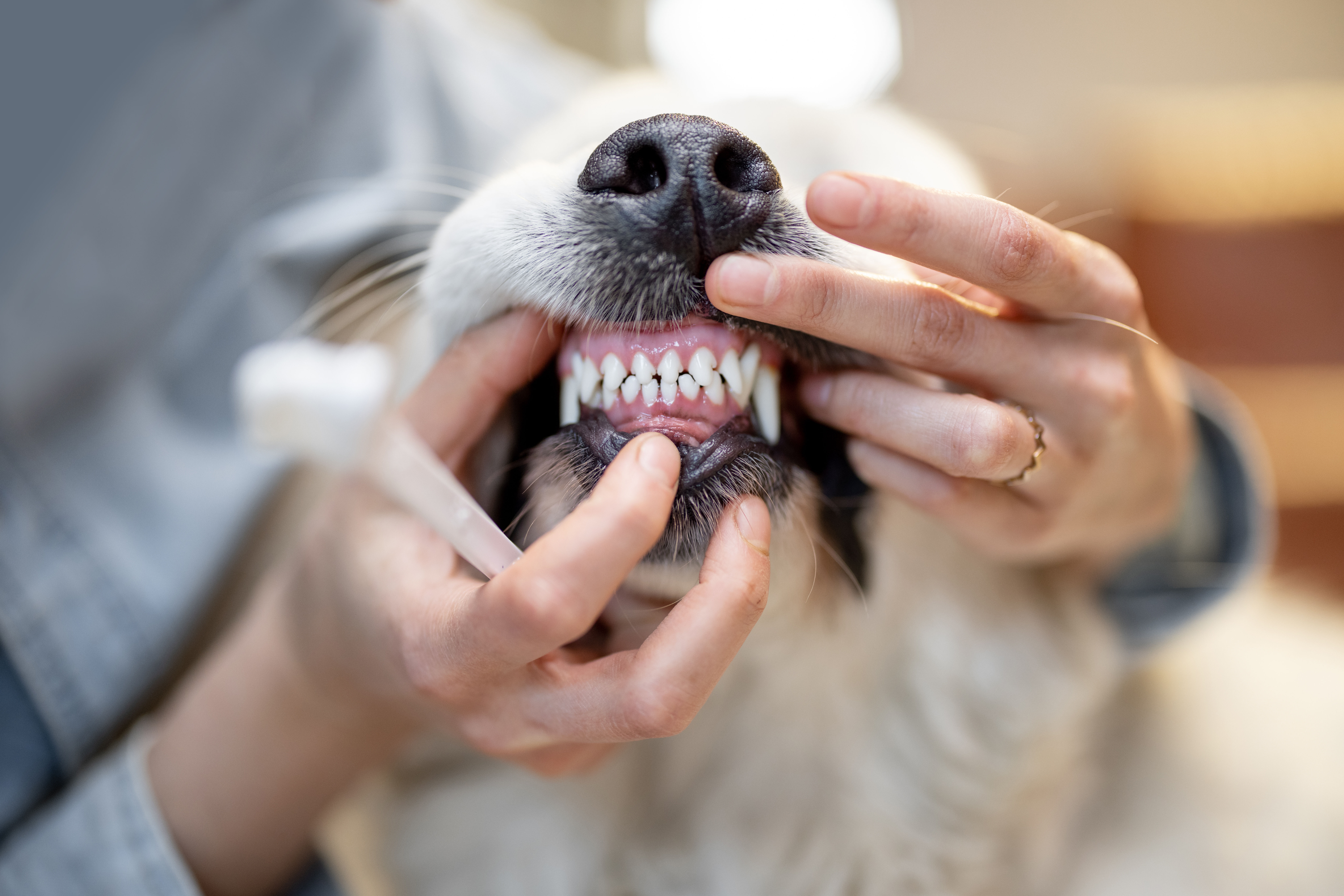This content is written by Dr. Katie Falk, Veterinarian, Rocky Gorge Animal Hospital.
Winter is the favorite season of many of our beloved pets. Long gone are the days of endless panting, relentless humidity and dissatisfying quests for the lowest, coldest tile floors. Instead, our fur-babies can run freely without concern for heat stroke. However, there are potential risks in these colder months that we pet-owners should be aware of.
To start, it’s important to know your pet’s limits. As we humans are able to pack on layer upon layer, our pets often need a protective outer layer as well. When determining the appropriate winter fashion for your pet, do consider the thickness of their hair coat to avoid under or over-heating. Keep in mind that if it is too cold for you, it is likely too cold for your pet as well. Also, leaving pets in cars unattended during winter months should be avoided.
In the winter, we’re typically walking our dogs in the dark more often. Take action to ensure you are seen from the road. Both you and your pet should wear bright, reflective, or even light-up outerwear. Additionally, pay close attention around ice to prevent slips and even falling through icy water. Cats will often seek shelter from the cold by hiding in cars. It’s recommended to make noise in and around your car before actually starting the engine to give our furry friends a minute to wake up and get to safety. When coming in from the outdoors, it is recommended to wipe down the paws of your dogs and cats. Alternatively, you could consider using booties to protect paws from the cold and other dangers to dogs and cats.
Harmful substances, such as salt, antifreeze and de-icers, can be picked up while outside, then licked off once inside. Ensure that bottles in your own home are kept safely out of reach and any spills are cleaned up promptly. These chemicals can be potentially fatal, with common clinical presentation being abnormal mentation. When it comes to treatment, time is of the essence, so please don’t hesitate in having your pet seen if any of these winter toxicities are suspected.
When pets are left outside, appropriate shelter must be ensured. The enclosure should protect from wind, drafts, and be elevated a few inches off of the ground. Pets spending significant time outside in the cold will use more energy trying to stay warm, thereby increasing their daily food requirement. So, give them an extra scoop! Avoid using metal bowls outside as they may freeze and stick to an inquisitive tongue. If temperatures do drop below zero, it’s recommended to bring all pets inside. The minimum temperature for some pets may be higher if they are not as adapted to the cold. Although Maryland isn’t known for our blizzards, we do get the occasional snow storm and associated power-outages. Make sure that your emergency plan includes food, water and necessary medications for your pets.
Last, is bread and butter prevention. Even as an ER doctor, I still put a huge emphasis on preventative medicine as a number of the cases I see can be avoided with proper vaccination and preventatives. In this area, prescription heartworm, flea, and tick preventatives are recommended year-round. Please discuss a recommended plan for your unique pet with your regular veterinarian.







